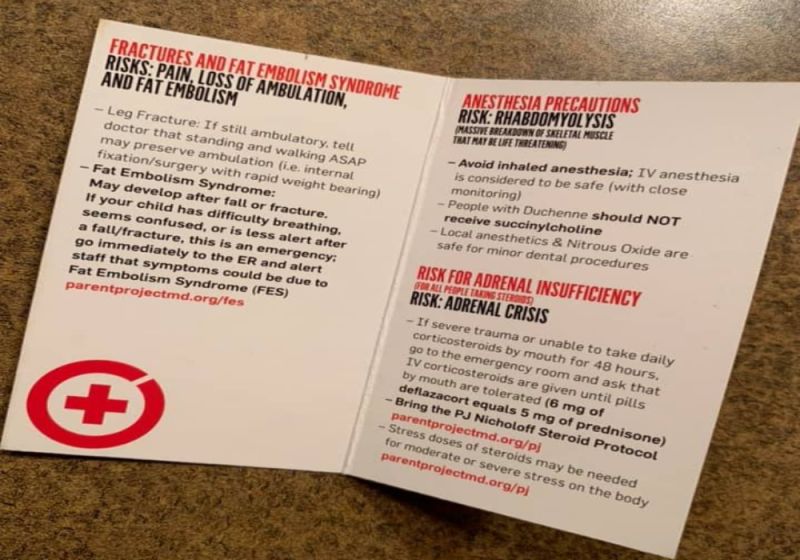Fat Embolism Syndrome
There is no gold standard test; FES is a clinical diagnosis - emDocs

image by: End Duchenne for Daniel
HWN Suggests
Liposuction nearly killed this woman—but this dangerous side effect isn’t just from plastic surgery
Chunks of fat are something you want in your steak, not your bloodstream. But that’s what happened to a 45-year-old woman after she got liposuction: About three days after her surgery, she landed in the intensive care unit, with doctors scrambling to figure out why she couldn’t breathe or think properly. A tiny glob of fat lodged in a blood vessel turned out to be the cause of all the commotion.
That globule led to something called fat embolism syndrome, or FES, which is quite far down on the list of likely complications from such a procedure. As far as the patient's physicians can tell, hers is the first ever case of liposuction-related FES in the United Kingdom, where they published…
Resources
The Crashing Patient with Long Bone Fractures: A Case of Fat Embolism Syndrome
There is no gold standard test; FES is a clinical diagnosis.
Fat embolism syndrome
Fat embolism syndrome (FES) is an ill-defined clinical entity that arises from the systemic manifestations of fat emboli within the microcirculation. Embolized fat within capillary beds cause direct tissue damage as well as induce a systemic inflammatory response resulting in pulmonary, cutaneous, neurological, and retinal symptoms. This is most commonly seen following orthopedic trauma; however, patients with many clinical conditions including bone marrow transplant, pancreatitis, and following liposuction.
Fat Embolism Syndrome in Long Bone Fractures
Fat embolism was first diagnosed in humans in 1861. More than a century later, Gurd described fat embolism syndrome (FES) using a triad of findings: hypoxia, confusion, and petechia. Long bone fractures, such as femoral shaft fractures, produce fat emboli but infrequently cause FES. It has been suggested that early fracture fixation and reaming of the intramedullary canal prior to fixation decrease the prevalence of FES. The diagnosis of FES remains a dilemma for clinicians. Hopefully, with improvement of imaging studies or further evaluation of interleukin‐6 levels, the prevalence of undiagnosed FES will decrease.
Fat Embolism Syndrome – A Case Report with Literature Review
Fat emboli syndrome has a variable degree of presentation, ranging from mild symptoms to severe multiorgan involvement that can ultimately be fatal. It can also be associated with longterm morbidity which emphasizes the need for rapid precise diagnosis and management.
What Is the Best E&M of Fat Embolism Syndrome?
“Fat embolism” refers to the presence of fat globules that obstruct the lung parenchyma and peripheral circulation. Fat embolism syndrome, on the other hand, is a more serious manifestation involving multiple organ systems. Specifically, it is a clinical diagnosis presenting with the classic triad of hypoxemia, neurologic abnormalities, and a petechial rash.
 Liposuction nearly killed this woman—but this dangerous side effect isn’t just from plastic surgery
Liposuction nearly killed this woman—but this dangerous side effect isn’t just from plastic surgery
Like the fat-bergs that clog our sewers, clumps of fat cells can block up veins and arteries. But unlike fat-bergs, there’s no one who can go break up cells inside of us. A fat embolism that breaks free and drifts through the blood can get lodged almost anywhere in the body, and that’s what causes FES.
Management
The fat embolism syndrome (FES) remains a diagnostic challenge for clinicians, despite having been initially described in 1873. Managment is supportive •immobilize fracture •optimise oxygenation •protective lung ventilation •avoid hypovolemia (some use albumin based fluids as albumin binds free fatty acids) •DVT and peptic ulcer prophylaxis •these therapies have been suggested but are considered ineffective: steroids, heparin, alcohol, and dextran
Patient
The vascular occlusion in fat embolism is often temporary or incomplete, as fat globules do not obstruct capillary blood flow completely because of their fluidity and deformability. The late presentation is thought to be a result of hydrolysis of the fat to more irritating free fatty acids which then migrate to other organs via the systemic circulation.
WikEM
Classic triad: hypoxemia, neurological abnormalities and petechiae.

Introducing Stitches!
Your Path to Meaningful Connections in the World of Health and Medicine
Connect, Collaborate, and Engage!
Coming Soon - Stitches, the innovative chat app from the creators of HWN. Join meaningful conversations on health and medical topics. Share text, images, and videos seamlessly. Connect directly within HWN's topic pages and articles.













